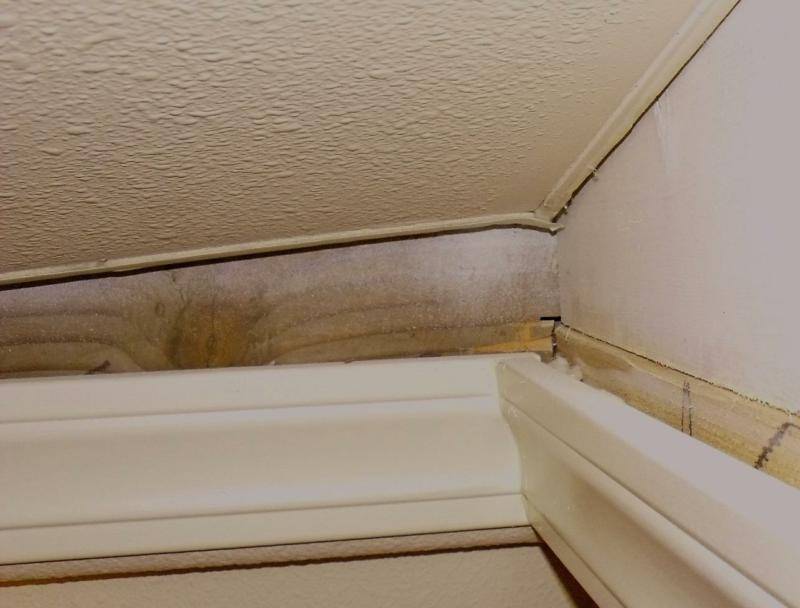
One common defect I see in new construction has to do with the weather-stripping of attic access covers. These covers are often nothing more than a piece of drywall cut to fit the opening, covered with insulation and with weather-stripping installed around the edge. All pretty simple really—-what could possibly go wrong?
Take a look at the following picture.

Can you see how the weather stripping is wrapped around the cover, close to the edge? Can you also see that it is not going to make contact with the wood trim around the inside of the opening? This next diagram shows where that weather-stripping is located in relation to the trim.

It actually might as well not be there. It should be located where the red dots are—-between the cover and the trim. The blue line shows the path of warm moist air into the attic in the winter and hot dry air into the house in the summer (actual moisture content will vary depending on where you live–and might even be reversed for some folks).
So how does this common defect happen? The weather-stripping is installed to make contact with the drywall before the trim is added. Lots of houses don’t install the trim. When the trim is added and installed higher than the drywall the weather-stripping no longer makes contact.
It is actually a very easy fix, and will stop the movement of air through the opening. Merely install more foam-tape weather-stripping so that it is between the cover and the trim.
Lots of homes that are tested with a blower door would test a lot better if it were not for this defect. Surprisingly, many do pass the blower door test requirements—even with this defect. Which begs the question as to how meaningful these blower door tests actually are.
By Charles Buell, Real Estate Inspections in Seattle
If you enjoyed this post, and would like to get notices of new posts to my blog, please subscribe via email in the little box to the right. I promise NO spamming of your email